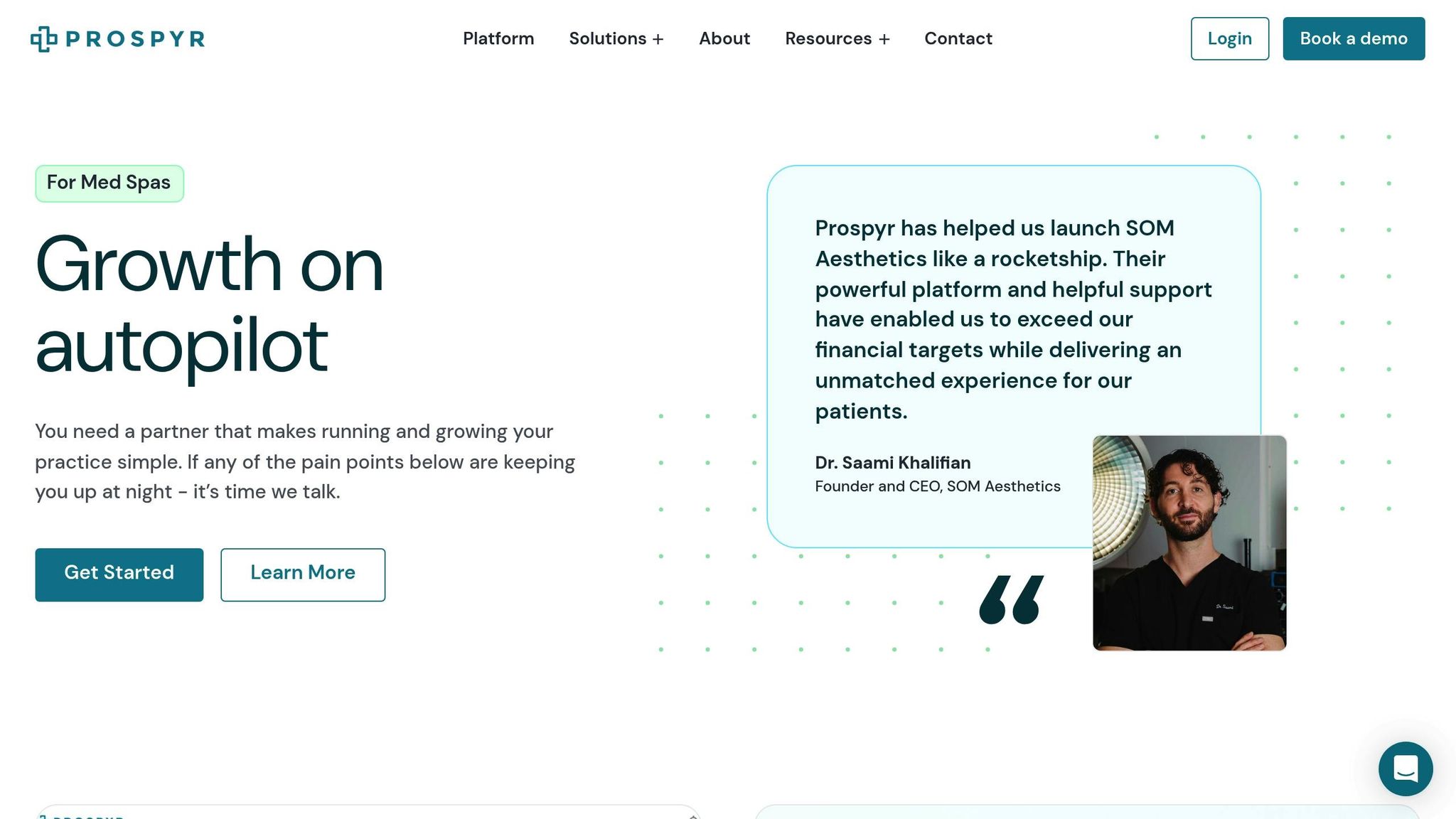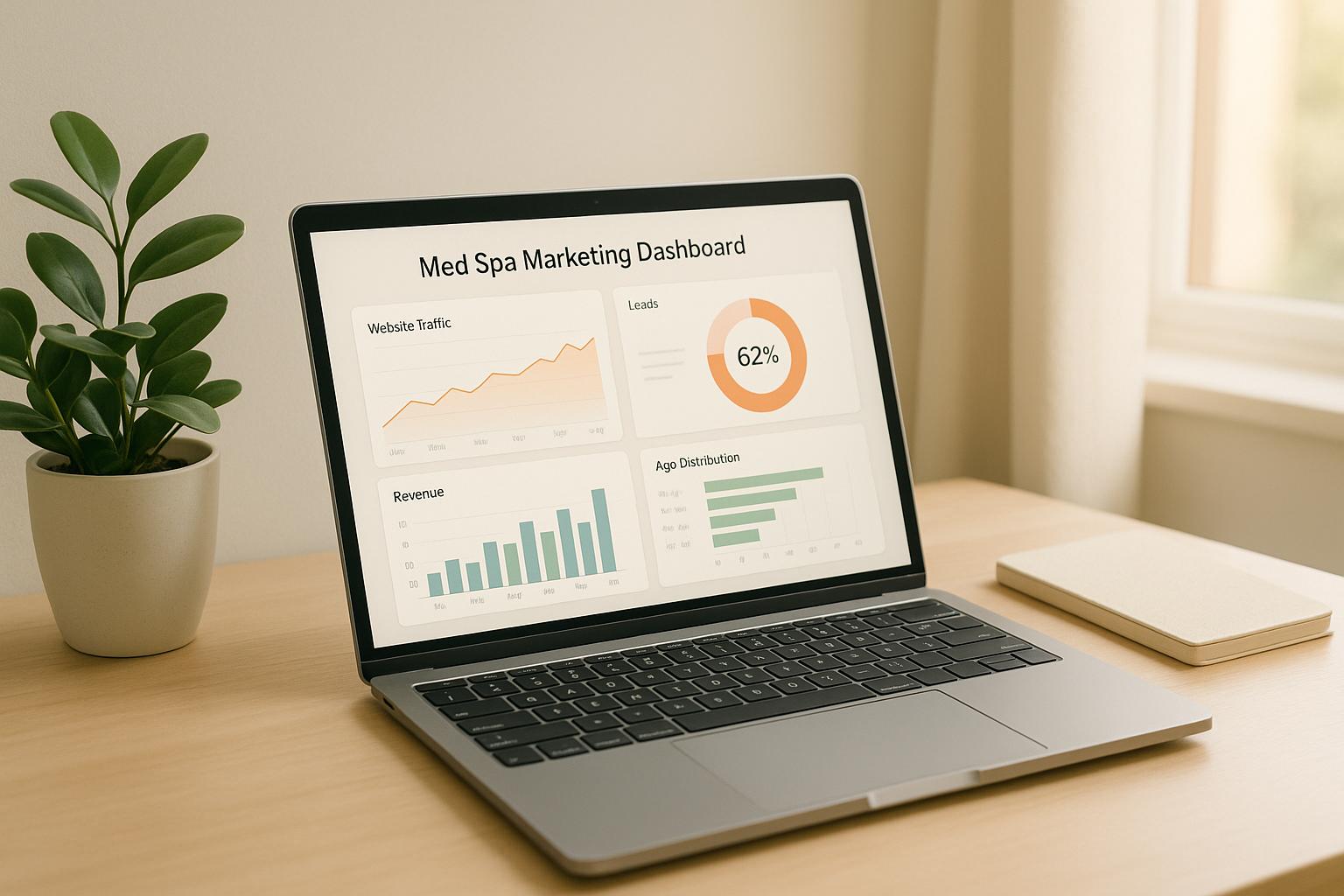Handling adverse event claims in med spas requires clear communication to maintain trust and avoid legal risks. The key is combining direct, personal interactions with modern digital tools for a balanced approach. Here's what you need to know:
- Direct communication: Face-to-face or phone interactions help address concerns quickly, build trust, and show empathy. However, they can be time-intensive and prone to documentation errors.
- Digital tools: Platforms like Prospyr streamline communication with automated responses, consistent messaging, and detailed, HIPAA-compliant documentation. They improve efficiency but may lack the personal touch some patients need.
Best practice: Use both methods together. Personal interactions for emotional support, paired with digital tools for accuracy, speed, and compliance, create a comprehensive system to manage patient concerns effectively.
| Aspect | Direct Communication | Digital Tools |
|---|---|---|
| Personal Connection | Builds trust but can be time-consuming. | May feel less personal but ensures consistency. |
| Documentation | Prone to errors and incomplete records. | Automated, accurate, and HIPAA-compliant. |
| Response Time | Immediate but depends on staff availability. | 24/7 support with automated workflows. |
| Compliance | Manual tracking is challenging. | Built-in compliance features simplify audits. |
Takeaway: Med spas should combine direct communication and digital tools to manage adverse events effectively, balancing patient care with operational efficiency.
1. Direct Communication Strategies
Traditional face-to-face and phone communication continues to play a key role in managing adverse events at med spas. These methods allow practitioners to address patient concerns promptly while fostering trust through personal interaction.
Transparency
Clear, straightforward communication is the backbone of effective adverse event management. Practitioners should explain complications in simple terms, covering the causes and steps to address them.
Being transparent doesn’t mean admitting fault. For instance, a practitioner might acknowledge that a patient’s swelling is lasting longer than anticipated and then offer solutions to improve comfort during recovery. This approach validates the patient’s concerns while maintaining professionalism and avoiding unnecessary liability.
Timing is equally important. Addressing a patient’s concerns within 24–48 hours shows attentiveness and care. Delayed responses, on the other hand, can lead to growing frustration, negative reviews, or even legal complications.
Empathy
Empathy is essential in patient communication. Active listening - paired with calm, nonverbal cues - helps build trust and defuses tension. Practitioners should give patients time to fully share their concerns, ask thoughtful questions, and summarize the discussion to ensure clarity.
Acknowledging the emotional toll of complications can also go a long way. For example, expressing understanding of a patient’s anxiety or disappointment can validate their feelings without assigning blame. This emotional connection often helps prevent the situation from escalating into formal complaints or legal disputes.
It’s important to avoid rushed or defensive responses, as these can further alienate patients.
Documentation
Thorough documentation is a must when handling adverse events. Every phone call, in-person meeting, and patient interaction should be recorded with details such as the date, time, participants, and main points discussed.
Promptly documenting these interactions is crucial. Including a witness, when possible, adds an extra layer of credibility. These records may prove invaluable if legal issues arise later on.
Efficiency
Quick responses, especially by phone, allow practitioners to address concerns immediately and take appropriate action before minor issues grow into major problems.
Direct communication also streamlines resource management. Practitioners can assess in real time whether additional staff, supplies, or treatments are needed, enabling efficient decision-making that balances patient care with cost control.
However, direct communication isn’t without its challenges. Busy practices may struggle to manage multiple adverse events at once, leading to delays or incomplete documentation. Relying solely on verbal communication can also increase the risk of miscommunication, especially in high-pressure situations.
While direct strategies are indispensable, they work best when paired with digital tools to enhance risk management. The next section explores how digital solutions can complement these efforts.
2. Digital Tools-Based Communication (e.g., Prospyr)

Modern platforms have reshaped how med spas handle adverse event communication, making the process more organized and efficient. These tools work alongside traditional methods, offering structured and trackable ways to address patient concerns while adhering to compliance standards.
Transparency
Digital tools enhance communication by creating clear, traceable records through integrated messaging systems and digital forms, benefiting both patients and practitioners.
For instance, Prospyr's email and SMS features allow practices to send real-time updates about adverse events. Imagine a patient experiencing unexpected swelling after a dermal filler treatment. The practice can immediately share concise educational materials that explain the difference between normal and concerning symptoms, along with clear care instructions. This approach not only reduces patient anxiety but also builds trust by showing transparency.
This level of openness naturally ties into a robust documentation process supported by digital systems.
Documentation
Automated systems ensure that every interaction - whether it's an email, SMS, or call - is logged with timestamps and participant details.
Prospyr’s integrated CRM and EMR system makes sure all adverse event communications are seamlessly added to the patient’s medical record. For example, if a practitioner sends follow-up instructions, the message is automatically linked to the patient’s treatment history, creating a detailed timeline of care and communication.
Additionally, Prospyr’s AI-powered note creation and transcription tools convert verbal discussions into written records in real time. If a practitioner calls a patient about post-treatment concerns, the voice-to-text functionality immediately documents the conversation, ensuring nothing is missed.
Efficiency
Beyond transparency and documentation, digital tools drastically improve workflow efficiency with automated notifications and scheduling integration. These features help med spas respond faster to adverse events. For example, when a patient submits a concern through an online form, automated workflows can trigger immediate alerts, ensuring the issue is addressed promptly.
Scheduling tools also allow patients to book follow-up appointments directly, often resolving concerns within hours. Prospyr’s task management features take it a step further by coordinating responses from multiple team members. If a patient needs additional care, the platform can automatically assign tasks like scheduling, ordering supplies, or consulting with other physicians, ensuring nothing falls through the cracks.
Empathy
While digital communication might feel impersonal at first, modern platforms are designed to maintain a human touch during sensitive situations. Customizable templates help practices convey empathy while ensuring professional and consistent messaging.
Prospyr even offers real-time sentiment monitoring, enabling practices to identify patients who may be struggling with complications but haven’t yet reached out. This proactive approach strengthens the patient-practitioner relationship and ensures patients feel cared for during challenging times.
sbb-itb-02f5876
Pros and Cons
When it comes to managing communication in med spas, balancing direct, personal interaction with the efficiency of digital tools like Prospyr is key. Here's a breakdown of how these two approaches compare:
| Aspect | Direct Communication | Digital Tools (Prospyr) |
|---|---|---|
| Personal Connection | Pros: Face-to-face conversations build trust and provide immediate emotional support during stressful moments. | Cons: Digital interactions can sometimes feel impersonal, which might leave anxious patients feeling disconnected. |
| Documentation | Cons: Manual record-keeping is prone to errors, incomplete notes, and inconsistent formatting among staff. | Pros: Automated logging, AI transcription, and integration with EMR systems ensure accurate and complete documentation. |
| Response Time | Cons: Requires staff availability during all hours, and after-hours concerns may go unaddressed until the next business day. | Pros: 24/7 automated responses, instant notifications, and self-service options mean patients can access help anytime. |
| Consistency | Cons: Communication quality can vary depending on the staff member, which may lead to mixed messages or confusion. | Pros: Standardized templates and automated workflows ensure patients receive consistent, professional communication every time. |
| Cost Efficiency | Cons: High staff involvement makes this approach costly, especially for high-volume practices. | Pros: After an initial investment, the platform scales efficiently, significantly reducing per-interaction costs through automation. |
| Compliance Tracking | Cons: Organizing paper trails is time-consuming and error-prone, making regulatory compliance more challenging. | Pros: HIPAA-compliant systems with searchable records, audit trails, and built-in compliance reports simplify regulatory requirements. |
| Patient Accessibility | Pros: No technology barriers - patients of all ages and comfort levels can engage easily. | Cons: Some patients, particularly older ones, may struggle with digital tools or prefer traditional communication methods. |
| Workflow Integration | Cons: Separate, manual communication steps can disrupt workflows and require staff to juggle multiple systems. | Pros: Integrated scheduling, task management, and CRM features streamline processes, enhancing overall efficiency. |
Beyond the Table: Key Considerations
While the table highlights the primary differences, there are a few additional factors to keep in mind:
- Learning Curve: Direct communication relies on existing interpersonal skills, making it straightforward for staff. Digital tools like Prospyr, on the other hand, require some initial training. However, Prospyr's user-friendly interface helps ease this transition quickly.
- Scalability: For small practices, direct communication might be manageable. But as practices grow, the structured workflows and automation provided by Prospyr become essential to handle increased patient interactions efficiently.
- Legal Protection: Direct communication demonstrates care and empathy, but it lacks the robust documentation offered by digital tools. Prospyr, with its timestamped records and automated compliance features, can provide stronger legal safeguards in case of disputes or litigation.
The Best of Both Worlds
Combining the strengths of both approaches often yields the best results. Prospyr's efficient automation and consistency can handle routine processes, while direct, personal follow-ups ensure patients feel valued and cared for. This hybrid approach not only builds trust and strengthens relationships but also provides the legal and operational advantages that modern med spas need.
Conclusion
Our analysis highlights that relying solely on direct communication or digital tools isn't enough to handle adverse event claims effectively. Each method offers distinct benefits that, when used together, create a well-rounded communication system to safeguard both patients and practices.
Face-to-face communication fosters trust and provides much-needed emotional support during sensitive situations. On the other hand, digital tools ensure consistency, accurate documentation, and compliance tracking. The takeaway here is clear: med spas must blend these two approaches to capitalize on their strengths and offset their limitations.
FAQs
What’s the best way for med spas to combine personal interaction and digital tools when handling adverse event claims?
Med spas can combine the efficiency of technology with the warmth of human interaction by blending thoughtful, clear communication with digital tools. For instance, AI-powered systems can handle tasks like initial reporting and documentation, making these processes faster and more precise. Still, it's essential to back this up with personalized follow-ups from staff to address patient concerns and nurture trust.
Using digital platforms for scheduling, updates, and secure messaging allows med spas to stay organized and responsive. When paired with a caring human approach, this strategy helps med spas manage adverse event claims effectively while keeping patient care and satisfaction at the forefront.
How can digital tools like Prospyr help med spas improve documentation and compliance?
Digital tools such as Prospyr simplify documentation and compliance for med spas by providing secure, HIPAA-compliant record-keeping and automating essential processes like consent management and patient communication. They minimize errors, ensure easy access to proper documentation, and save time by cutting down on manual tasks.
With features like digital intake forms, automated workflows, and AI-powered capabilities, Prospyr helps med spas keep accurate records while improving efficiency and patient care. This approach not only supports compliance but also builds trust and reinforces a professional image for your practice.
Why is showing empathy essential when addressing adverse events, and how can digital tools enhance patient communication?
Empathy plays a key role in managing adverse events, as it helps establish trust, shows genuine understanding, and eases patient concerns. When patients feel their worries are met with care and attention, they are more likely to feel supported and valued.
Digital tools can help strengthen empathy by enabling more personalized communication. For example, tailored messages, thoughtful follow-ups, and features like automated reminders or secure messaging make it easier for clinics to stay connected with patients. Even AI-driven responses, when used thoughtfully, can maintain a sense of human touch. These tools ensure that virtual interactions remain compassionate, fostering deeper and more meaningful patient relationships.



